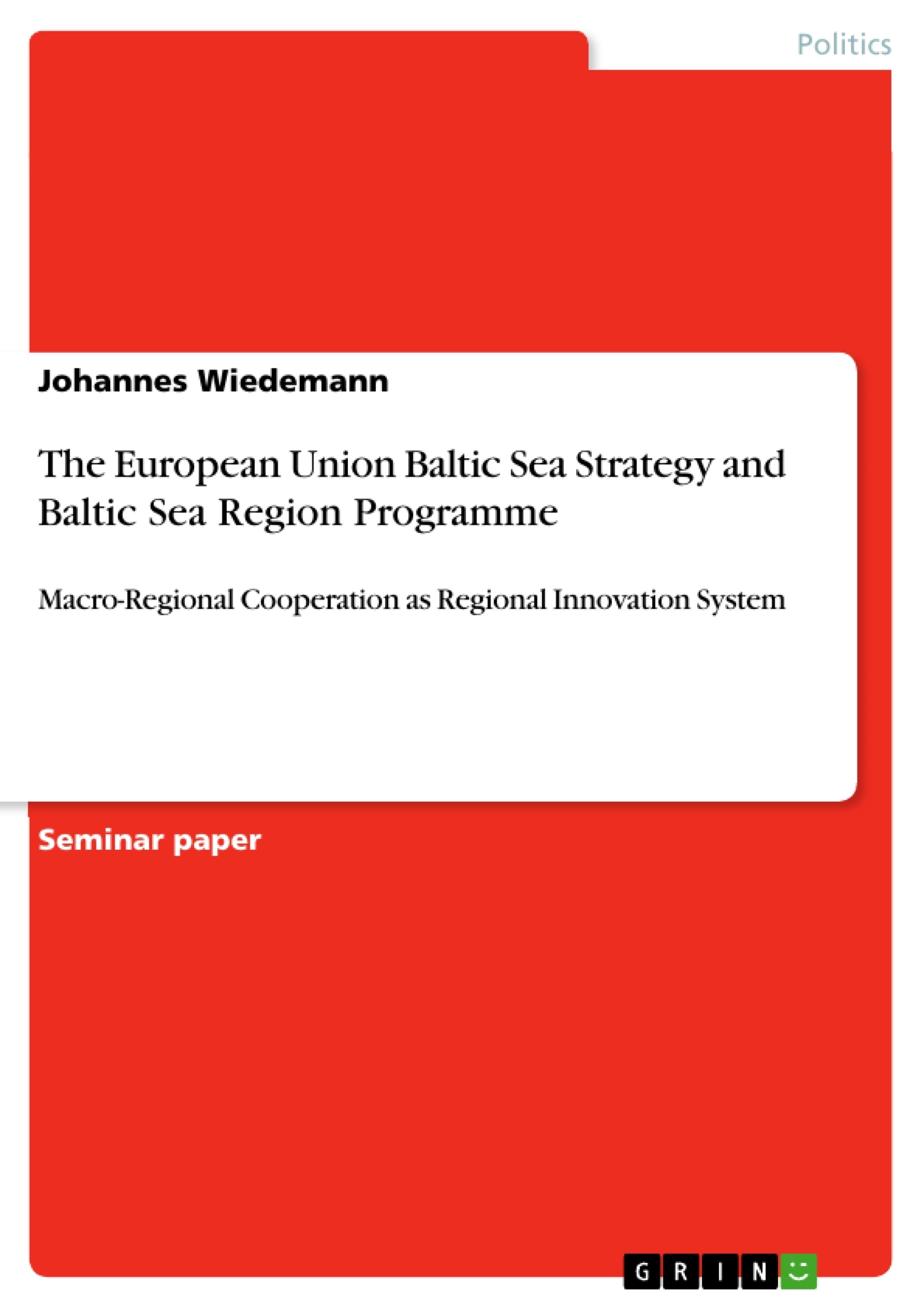This paper is designed to examine the Regional Innovation Policy , consisting of existing schemes of systematic exploitation of innovation, so-called Regional Innovation Systems, and entailing public procurement for innovation and cluster-policies in combination with a mapping of the actors in the Regional Innovation System in the Baltic Sea Region, all in regard to Small Medium Enterprises due its pre-dominance in the fields of research and practical implementation of economic innovation. While the scope of this paper includes the effectiveness and efficiency of the "European Union Baltic Sea Region Programme" (EU BSRP) in reference to one of its priorities, "fostering innovation‟ for economical growth in the Baltic Sea Region, the programme's relative novelty in design and strategic relevance, given by the fact of promulgation of a "European Union Strategy for the Baltic Sea Region" (EU STRAT BSR) parallel to implementation of EU BSRP, point out to a demand for further investigation on the fact that the EU BSRP is an innovation by itself concerning regional policy as "macro-regional cooperation" within the framework of the EU. This paper will address firstly the EU STRAT BSR and its potential effects on the strategic environment in the Baltic Sea Region in particular and on European level in general by scrutinizing the second programmatic "pillar", making "[…] [t]he Baltic Sea A Prosperous Place", due to its reference character for the economic yield of the strategy. This short description and analysis of EU STRAT BSR is followed by an outline of the EU BSRP by providing an account of innovation policies in the Baltic Sea Region.Two research questions will serve as a guideline along the descriptive part and as reference to the analysis: Is political innovation in terms of transnational macro-regional cooperation also innovative and rewarding from the perspective of current economic research on innovation and according policies, meaning: Does it foster growth? And secondly, for the sake of the scope of European Studies, are EU STRAT BSR and EU BSRP able to perform even up to their political Level of Ambition?
Contents
Introduction
1. Outline of the EU STRAT BSR
a. Political Approach
b. Structure
c. Challenges
2. Outline of the EU BSRP
a. Political Approach
b. Structure
c. Challenges
i. Regional Innovation Policy
ii. Public Procurement and Innovation
iii. Clusters
iv. Dilemmas
Conclusions
References
a. Bibliography
b. Online Sources



